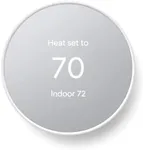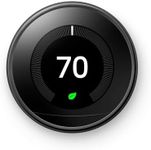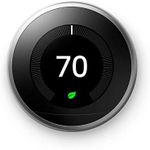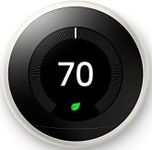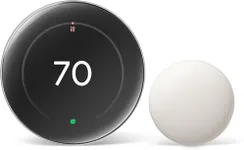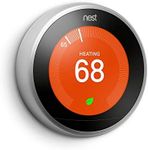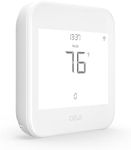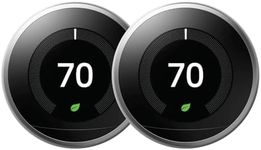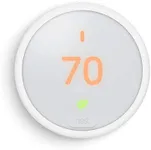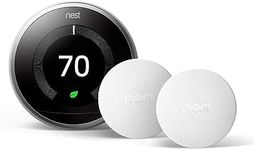Buying Guide for the Best Google Nest Thermostats
Choosing the right Google Nest Thermostat can significantly improve your home's energy efficiency and comfort. When selecting a thermostat, it's important to consider various specifications that will determine how well the device meets your needs. Understanding these key specs will help you make an informed decision and ensure you get the best fit for your home and lifestyle.CompatibilityCompatibility refers to whether the thermostat will work with your existing heating and cooling system. This is crucial because not all thermostats are compatible with all HVAC systems. To navigate this, check the compatibility information provided by the manufacturer and compare it with your system's specifications. If you have a standard HVAC system, most Nest thermostats will work. However, if you have a more complex system, such as multi-stage heating or cooling, you may need a more advanced model. Ensure the thermostat you choose supports your system to avoid installation issues.
Learning CapabilitiesLearning capabilities refer to the thermostat's ability to learn your schedule and preferences over time to automatically adjust the temperature. This feature is important for maximizing energy savings and maintaining comfort without manual adjustments. Thermostats with advanced learning capabilities can adapt to your habits within a week or two. If you have a predictable schedule, a learning thermostat can be very beneficial. However, if your schedule is irregular, you might prefer a model with manual programming options.
Remote ControlRemote control allows you to adjust your thermostat settings from anywhere using a smartphone app. This is important for convenience and energy management, especially if you travel frequently or have an unpredictable schedule. When evaluating this feature, consider how often you might need to change settings remotely. If you value the ability to control your home's temperature while away, ensure the thermostat you choose offers robust app support and user-friendly remote control features.
Energy ReportsEnergy reports provide insights into your energy usage and can help you identify ways to save on your utility bills. This feature is important for those who are conscious about energy consumption and want to optimize their usage. Look for thermostats that offer detailed energy reports and actionable recommendations. If you are keen on tracking and reducing your energy use, a thermostat with comprehensive energy reporting will be beneficial.
Integration with Smart Home SystemsIntegration with smart home systems refers to the thermostat's ability to work with other smart devices in your home, such as voice assistants, smart lights, and security systems. This is important for creating a seamless and automated home environment. To navigate this, check the compatibility of the thermostat with your existing smart home ecosystem. If you already use devices like Google Home or Amazon Alexa, ensure the thermostat you choose can integrate smoothly with these systems. This will allow you to control your thermostat using voice commands and create automated routines.
Design and DisplayDesign and display refer to the physical appearance of the thermostat and the quality of its screen. This is important for both aesthetic and functional reasons. A clear, easy-to-read display can make it simpler to adjust settings and view information. When choosing a thermostat, consider where it will be installed and how it will look in your home. If you prefer a sleek, modern design, look for models with high-resolution displays and customizable screen options. The right design can enhance both the functionality and appearance of your living space.

